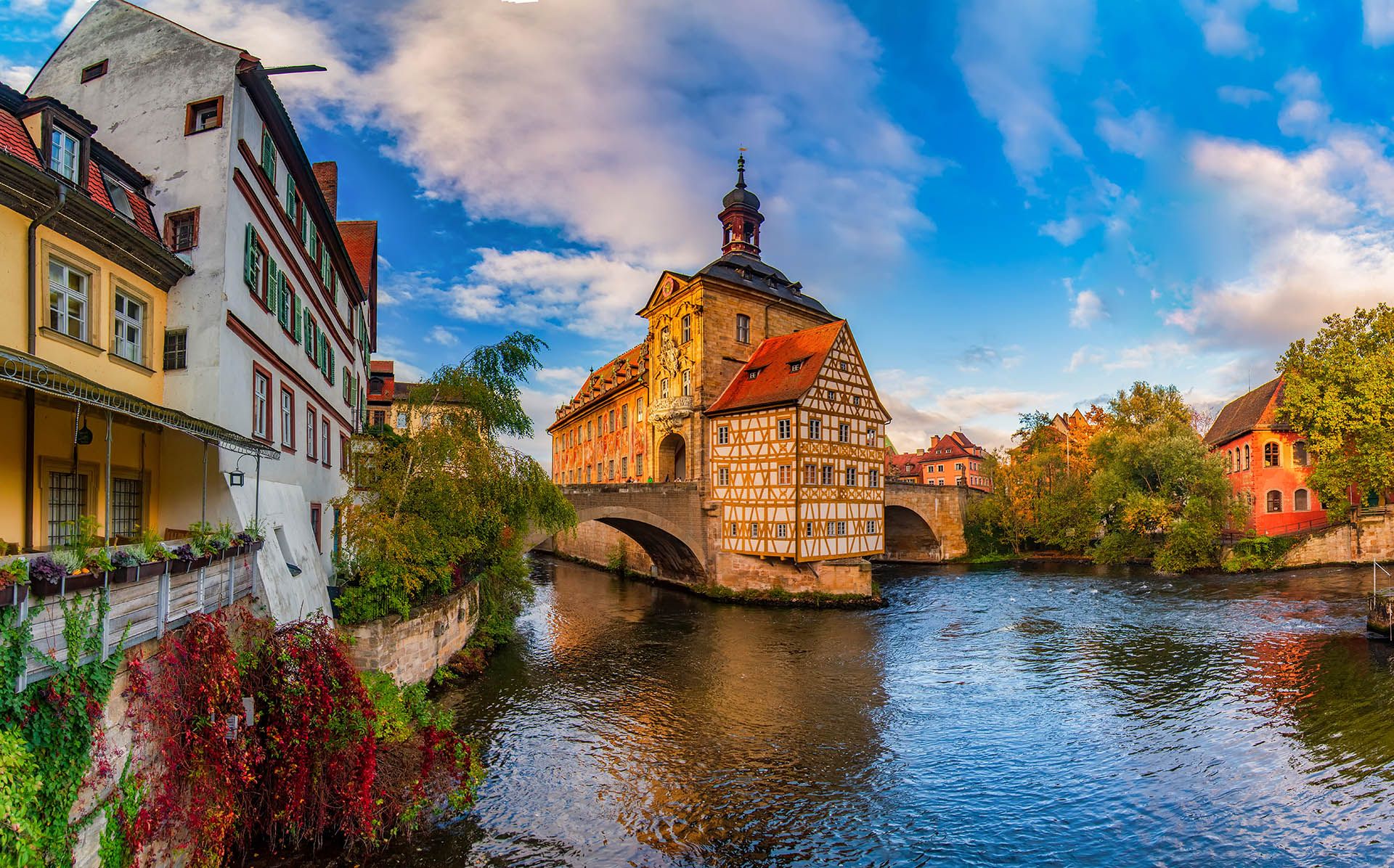From Bauhaus to buttresses: architecture and design sites
Most famous as the birthplace of Bauhaus, Germany’s architecture and design is something to write home about. The Bauhaus school was founded in 1919 in Weimar; several Bauhaus gems survive to be explored, while many of the country’s Modernist housing estates are still lived in today. Berlin’s Horseshoe Estate (Hufeisensiedlung) consists of six estates, built by the star architects of German Modernism (Bruno and Max Taut, Hans Scharoun, Walter Gropius) between 1913 and 1934. For the ultimate experience, choose to spend the night in the restored Tautes Heim museum house nearby, designed by Bruno Taut.
Those after an older throwback won’t be disappointed by the exceptional Cologne Cathedral. With its spiky flying buttresses, staggering height of 157m and 14th-century art inside, it’s the cherry (or spire) atop the cake when it comes to Germany’s top UNESCO architectural sites.
From fossils to rock gigs: industrial heritage sites
Germany’s rich cultural history is tied up with its industrial heritage, and to UNESCO, preserving this is firmly on the agenda. While mining regions and sophisticated water-management systems may not sound like the most stimulating of visitor attractions, prepare to find yourself pleasantly surprised...
Located close to the French border near Saarbrücken, Völklingen Ironworks was once a blast-furnace complex that employed 17,000 workers. Today, visitors can enjoy its viewing platform, trundle along the coal track or even headbang away at one of their open-air rock gigs.
Meanwhile, near Darmstadt lies the Messel Pit Fossil Site; excavations at this former quarry have found over 1000 species of intriguingly well-preserved animals and plants found sandwiched between layers of oil shale. Fancy trying your luck? The visitor centre offers tours to active excavation sites, where you can try finding a fossil yourself.










